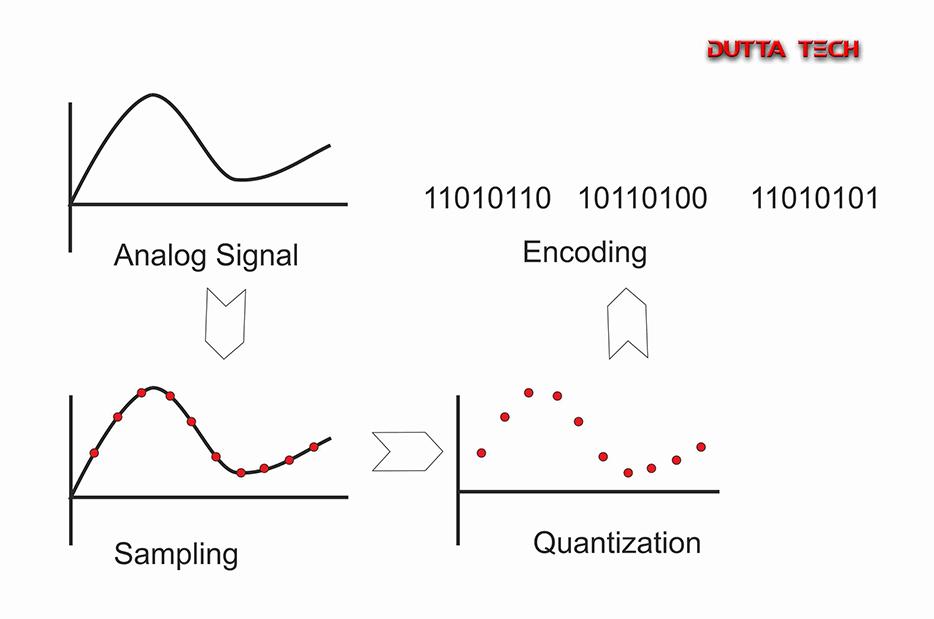Microphones produce analog voice, while cameras provide analog video, both of which are processed as analog data. Analog to digital conversion is required to transport this analog data via digital impulses. Digital data is discrete, but analog data is a continuous stream of data in the waveform. Pulse Code Modulation(PCM) is used to convert analog waves into digital data (ie. Analog to Digital Conversion).
One of the most often used methods for converting analog data to digital form is PCM. There are three steps to it:
- Sampling
- Quantization
- Encoding.

Table of Contents
Sampling
Every T interval, the analog signal is sampled. The rate at which an analog signal is sampled is the most essential factor in sampling. The sample rate must be at least two times the signal’s maximum frequency, according to the Nyquist Theorem.
Quantization
Sampling transforms a continuous analog signal into a discrete form. Every discrete pattern depicts the analog signal’s amplitude at that particular time. The quantization is carried out between the maximum and least amplitude values. Approximation of the instantaneous analog value is called quantization.
Encoding
In encoding, each approximated value is then converted into binary format.
Transmission Modes
How data is sent between two computers is determined by the transmission method. Binary data in the form of 1s and 0s can be transmitted in two ways: parallel and serial.
Parallel Transmission
The binary bits are grouped into fixed-length groups. With the same number of data lines, the sender and receiver are connected in parallel. Both computers can tell the difference between high and low-order data lines. On all lines, the sender sends all the bits at the same time. A whole group of bits (data frame) is transferred in one go because the data lines are equal to the number of bits in a group or data frame. Parallel transmission has the advantage of fast speed, but the downside is the cost of wires, which is proportional to the number of bits sent in parallel.
Serial Transmission
In serial transmission, bits are sent one after another in a queued manner. Serial transmission requires only one communication channel.
Serial transmission can be either asynchronous or synchronous.
Asynchronous Serial Transmission
It’s called that since timing isn’t important. Data bits have a distinct pattern that aids the receiver in identifying the start and end of data bits. Every data byte, for example, is prefixed with a 0, and one or more 1s are added at the end.
A gap may exist between two continuous data-frames (bytes).
Synchronous Serial Transmission
Since there is no method of detecting start and end data bits in synchronous transmission, timing is important. There is no prefix/suffix method or pattern. Burst mode sends data bits without keeping a gap between bytes (8-bits). Several bytes can be contained in a single burst of data bits. As a result, timing becomes extremely important. The receiver is responsible for recognizing and separating bits into bytes. The synchronous transmission offers the advantage of high speed and does not have the overhead of extra header and footer bits that asynchronous transmission has.
